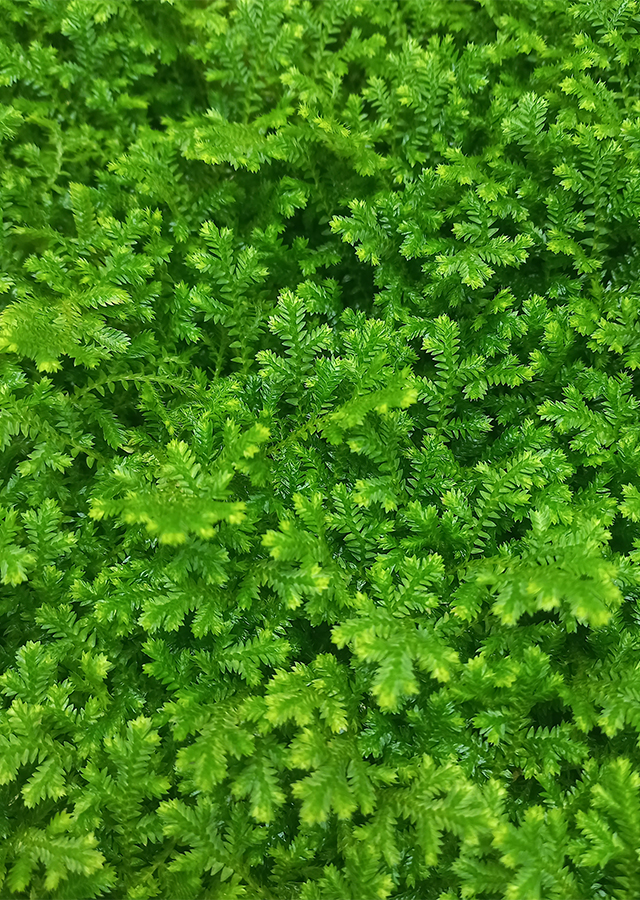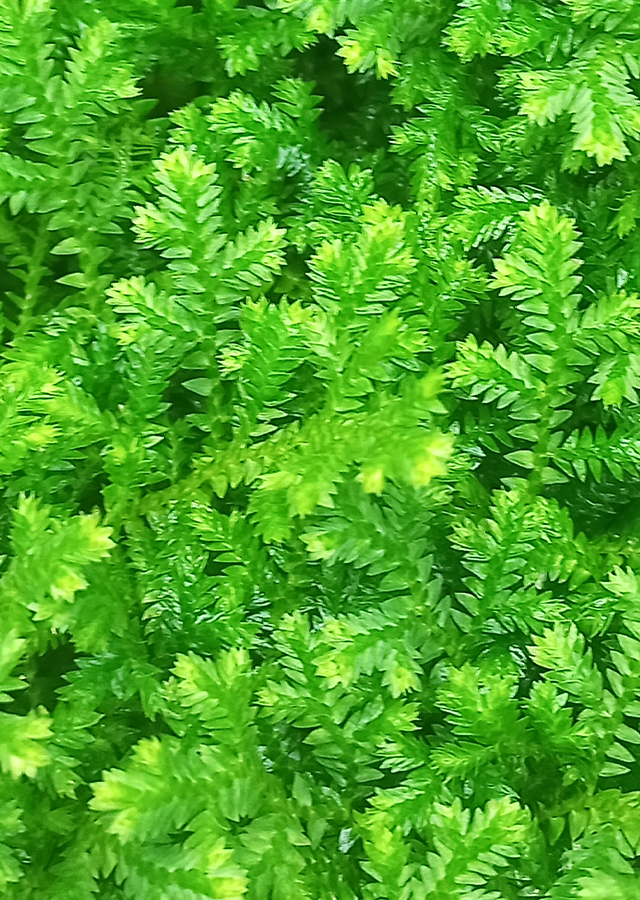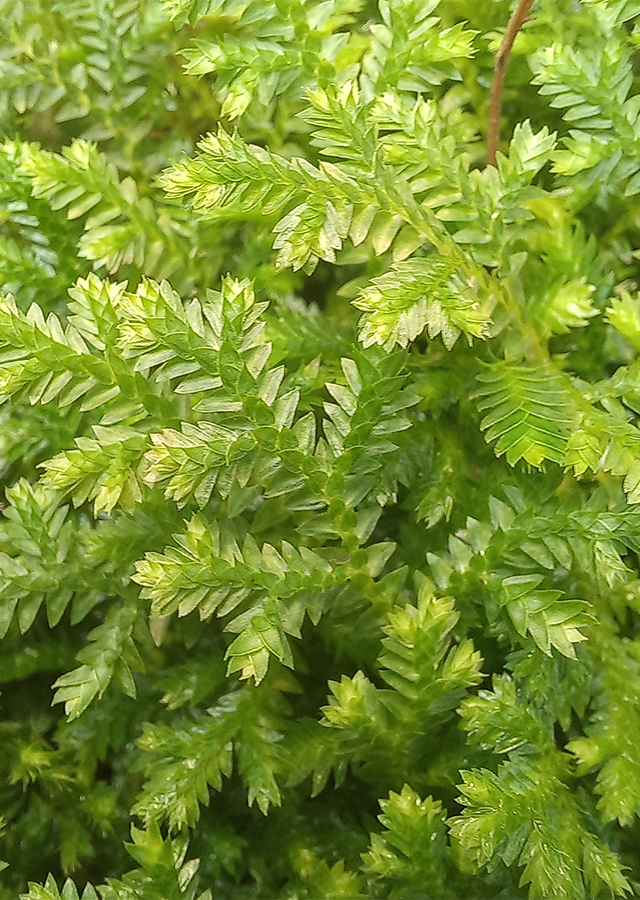Traditional Herbs from Selaginella kraussiana
What is Selaginella kraussiana Looks like??



Parts of Selaginella kraussiana that could be used
- Leaves
- Roots
Selaginella kraussiana Distribution
Selaginella kraussiana comes from Macaronesia, tropical and South Africa. The genus nickname 'Selaginella' is a diminutive of Selago, a flowering plant with smooth, moss-like foliage. The species nickname 'kraussiana' is named after the German naturalist, plant collector and museum director, Christian Ferdinand Friedrich von Krauss (1812-1890), who traveled to South Africa and collected 2,308 species, of which 340 species and 34 genera were new to science. It is a subshrub and grows primarily in wet tropical biomes. Various species of Selaginella have been used as food, medicine, handicrafts and also as ornaments since ancient times. Since the distribution of Selaginella species is seen worldwide, the use of this plant has been traditionally observed by people all over the world for various purposes.Agroecology of Selaginella kraussiana
Selaginella kraussiana prefers shade to full shade and fertile, moist but well-drained, acidic soil. Don't let the soil dry out between waterings, or grow plants in conditions that are constantly waterlogged which can cause crown rot. Likes high humidity, occasional misting, and plants in a terrarium if used in an air-conditioned area. Humidity that is too low makes the plant susceptible to leaf browning or blistering.
Morphology of Selaginella kraussiana
- Rhizophores at intervals along the stem and creeping branches, on the dorsal side in the axils of the stem branches.
- Main stem branched throughout, not very regularly pinnately branched, slightly articulated, stranded, 0.6-1.2 mm diameter. below, subquadrangular or angulate, sulcate, glabrous, with 3 vascular bundles of 10-20 pairs of primary leaves, 2 or 3 times pinnately branched, branchlets are sparse or irregular, main branches are close together on the main stem 2-5 cm apart, final branches are 3-6 mm wide including leaves.
- The leaf axils on the main stem are not clearly larger than those on the branches, oval-elliptical, base not peltate, blunt; leaf axils on branches symmetrical, oval-elliptical, 2.3-3.8 \u00d7 1-2 mm, base exauriculate (obtuse), margin denticulate. Leaf spines asymmetrical, on branches approximately or not, elliptic-lanceolate wide, 2.1-2.8 \u00d7 0.6-1 mm, not carinate or slightly carinate, base oblique, slightly uniauriculate (on the outer side ), not peltate, margins denticulate, leaf tips acuminate. The ventral leaves are asymmetrical, those on the main stem are clearly no larger than those on the branches; ventral leaves on distant branches, spreading, ovate-elliptical, 2.4-4 \u00d7 1.2-1.8 mm, margin denticulate, apex acute; the acroscopic base is not enlarged. Fertile branches erect.
- Strobili solitary, terminal and lateral to branches, compact, tetragonal, 3-4 \u00d7 ca. 1mm. Sporophyll uniform, white-bordered, ovate-lanceolate, margin denticulate, tip acuminate. Underside of strobilus with only 1 megasporophyll at the base, elsewhere with microsporophylls. Microsporangia are elliptical-oblong, with relatively large cells in the center. Echinate microspores, 25-36 �m, cristate-reticulate megaspores, 400-1100 �m.
Cultivation of Selaginella kraussiana
Propagated by leafy stem cuttings, layering, division, and spores.
Selaginella kraussiana, more details :
Chemical Content of Selaginella kraussianaThe most common flavonoids are ametoflavone and robustaflavone.
Benefits of Selaginella kraussiana
Selaginella kraussiana has potential and activity as antitumor, antimalarial, antiallergic, antithrombotic, antiinflammatory, antihypertensive, antibacterial, antioxidant, antihepatotoxic, estrogenic and antiviral.
Simplisia of Selaginella kraussiana
Another Facts for Selaginella kraussiana :
Synonym of Selaginella kraussianaLycopodioides azorica (Baker) Kuntze, Selaginella canescens Fée
Habitus of Selaginella kraussiana
Fern. Annual fern, 5-10 cm high
Habitat of Selaginella kraussiana
- Forest
- Mountains
- Land
No comments:
Post a Comment